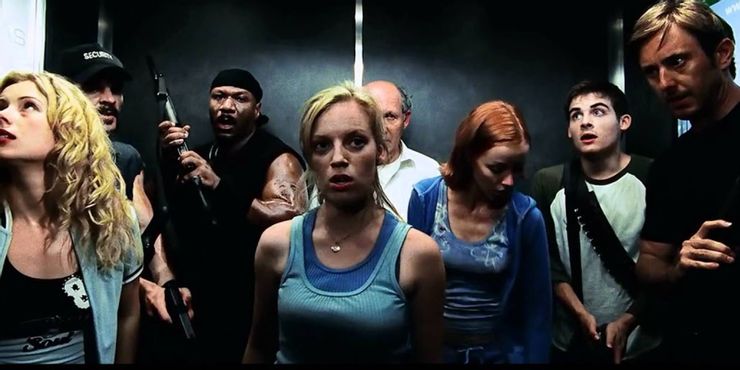As a lifelong horror fanatic, few films have captured my twisted imagination like George A. Romero’s 1978 classic Dawn of the Dead. The story of survivors taking refuge in a shopping mall amid a swelling zombie apocalypse struck a chord through its stark vision, social commentary, and of course gruesome effects courtesy of the legendary Tom Savini.
When I first heard a remake was on the way in 2004 from director Zack Snyder, I was among the chorus of voices crying sacrilege. How could any reimagining match the dark power and influence of the original? To my surprise, Snyder crafted an experience both faithful and fresh that revamped the premise for modern audiences. Revisiting both films today, each Dawn stands on its own as a pinnacle of zombie horror.
Romero’s Dawn peered into America’s consumer culture through blood-spattered lenses. Its ragtag group of survivors finding shelter in a shopping mall provided a morbid metaphor for materialism that resonated during the ‘Me’ Decade.
Monroeville Mall outside of Pittsburgh, where much of the film was shot, became a character in itself with its labyrinth of stores and hollow commercial cheer. The film’s gray-toned cinematography and pulsing synth score captured society in decay. The original Dawn unfolds at a methodical pace, following four survivors who band together in the mall and fortify it against the shambling hordes outside.
Tensions rise and fall between the group, with faction lines drawn over whether they should selfishly hoard the mall’s spoils or allow in other survivors. The film suggests humanity may be doomed not by the zombie outbreak but its own petty desires and inability to cooperate.
Over time, the familiar setting of the mall transitions into a surreal space as the living dead overrun its floors. Savini’s gory effects bring visceral impact to the film’s themes, with Tom’s FX shop furnishing zombies in varied stages of grisly decay. The movie’s downbeat ending leaves little hope, with the mall survivors realizing no rescue is coming.
Snyder took cues from video games in his high-energy remake, employing fast-paced action and swarms of athletic zombies rushing and clawing over one another.The remake’s slick production values and vibrant color palette presented a stark contrast to the dour original.
By foregoing an obvious political agenda, Snyder focused on visceral thrills and maintaining intensity throughout. Still, the mythical mall remained central as a supposed oasis and inescapable hell.
The remake propels at a breakneck pace from the start, opening on a nurse waking to a world already overrun by “infected” (not yet zombies). After a narrow escape, she joins a police officer and two criminals who take shelter in a mall.
Any notions of maintaining civility crumble as chaos prevails inside and out. While nodding to the original, the remake favors adrenaline over allegory. The film’s flashy style and heavier action elements aimed to reinvigorate the genre for younger audiences.
Snyder employs parkour-esque zombies that run, leap and twitch with alarming speed. Digital effects enhance Savini’s practical work in depicting grisly feeding frenzies and skulls split open.
By the film’s end, the mall has descended into a churning grindhouse tableau of bullets, blood and beasts unleashed. The downbeat finale proves no more hopeful than the original.
Both films share bleak outlooks on human nature and civilization reduced to a feeding ground of base instincts. For me, each Dawn earns its place as a vision of chilling insight and unflinching gore that reminds us of humanity’s fragility.
Whether 1978 or 2004, the Dead continue to rise and consumerism consumes all. Long live the mall!
Upon release, Romero’s Dawn was cut for an R rating, neutering some of its impact. The unrated edition restores essential gore emphasizing the body horror and apocalyptic tone. While less politically loaded, Snyder’s remake faced its share of censorship issues due to the MPAA threatening an NC-17. The unrated cut is the definitive experience, unleashing the full power of its adrenalized zombie mayhem.
Over 40 years later, Romero’s Dawn remains influential with its stark vision of survivalism and critique of society reduced to tribalism. Thanks to home video, the film found its audience and enduring cult status. The remake introduced a new generation to the joys of zombie cinema and reinvigorated interest in all things undead.
Both films have spawned countless imitators in their wake, yet none possess their primal power. For me, each Dawn of the Dead earns eternal life for capturing humanity at its most raw and ravenous. The dead may walk, but in the end we are our own worst enemies clawing at the dying remains of civilization.
Upon Romero’s passing in 2017, tributes poured in honoring his profound impact on horror. Though known for defining the modern zombie, his Dead films serve as prescient social barometers warning where our basest instincts may lead if left unchecked.
In an age where consumption and division reign, the messages of Dawn of the Dead ring louder than ever. We turn on one another even as something sinister rises from within, ready to devour us whole should we continue gnawing at ourselves. Therein lies the true terror of these twin zombie classics—not the dead without, but the beasts within waiting to be unleashed.
And so the mall remains a microcosm of society in decline, its glittering wares and false oasis a vain comfort as the world outside burns. The zombies amass, driven by one impulse: consume. Feeding into oblivion, whoever and whatever may remain.
Both timeless and of their era, comforting in their familiarity yet jolting with each revisit anew. Hail the eternal dread and dark prophecy of Dawn of the Dead! Long may the Dead rise and reign.

